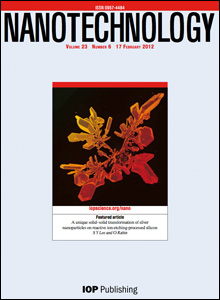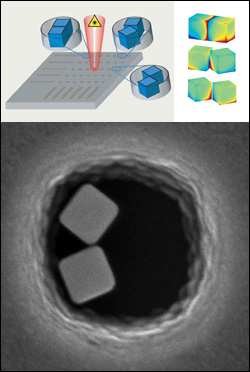News Story
Rabin Writes Nature Nanotechnology News and Views Column
Department of Materials Science and Engineering/Institute for Research in Electronics and Applied Physics assistant professor Oded Rabin, an innovator in the use of nanocubes and plasmonic nanostructures to improve the effectiveness of surface enhanced Raman spectroscopy (SERS), was invited to comment on a new discovery in the field in Nature Nanotechnology's July op-ed News and Views column.
Rabin's essay, "Self-assembly: Judging a nanocube by its cover," introduces readers to a paper in the same issue, "Self-orienting nanocubes for the assembly of plasmonic nanojunctions." In the paper, Andrea R. Tao (University of California, San Diego) and her colleagues demonstrate how a mixture of polymers placed around a collection of silver nanocubes guided their self-assembly into particular patterns. The silver nanocubes were coated with a hydrophilic (water-miscible) polymer and embedded in a thin film of a hydrophobic (water-repelling) polymer. The two polymers repel each other, pushing the nanocubes into linear and branched formations. By varying the length of the polymer strings Tao's team successfully controlled whether neighboring cubes aligned face-to-face or edge-to-edge. Rabin comments that such small modifications in the positions of plasmonic nanoparticles lead to dramatic changes of the optical properties of the whole structure.
Rabin explains that novel technologies for guiding the parallel self-assembly of nanoscale objects into larger structures are key to the development of scalable and inexpensive nanomanufacturing techniques. The incorporation of tunable polymers whose properties can be activated or reversed by external stimuli in Tao’s systems, he proposes, could result in easily-processed smart-materials suitable for many types of sensing and diagnostic applications.
"[C]ombinations of bottom-up and top-down approaches could potentially offer greater control and reproducibility of the nanoparticle assembly process," he writes. "…The more we understand about the non-specific interactions in such systems, and how they can be used to balance attractive and repulsive forces on multiple length scales, the more deterministic and technologically relevant the self-assembly process will become."
For More Information:
Read "Self-assembly: Judging a nanocube by its cover," online at nature.com »
Visit Professor Rabin's web site »
Published July 20, 2012












